By Shantanu Kaushik
Data Transmission Service (DTS) is a fully managed data replication service that supports different modes for different operations. It supports migrations between relational databases, data warehouses, and NoSQL databases. The Data Transmission Service (DTS) supports incremental data transfers from on-premises to the cloud and from cloud to cloud.
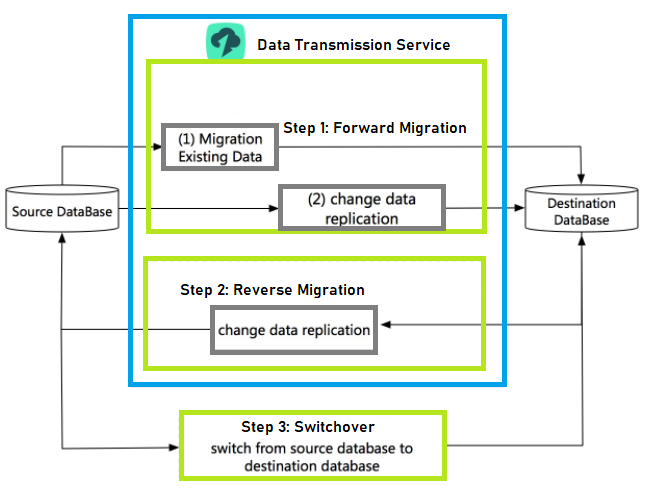
Data Transmission Service (DTS) supports multiple replication modes to replicate data:
The Data Transmission Service (DTS) provides massive advantages over traditional migration tools:
The Alibaba Cloud Data Transmission Service (DTS) has an architectural flow that supports dual redundancy features. All of the functions of DTS are deployed on multiple servers that have dual redundancy. Let's take a look at each module to understand how it functions:
Let's take a look at the architectural flow:
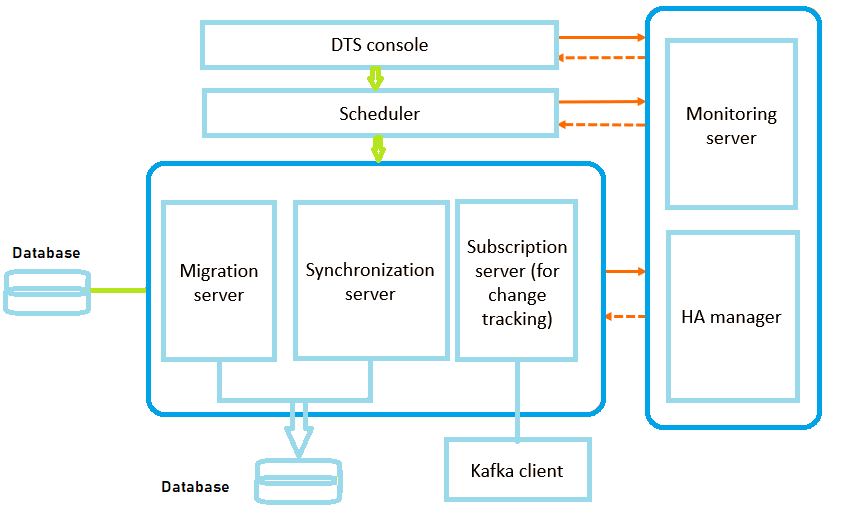
Data migration follows a framework that enables a more enhanced and feature-rich migration scenario. Consisting of multiple phases called Schema Migration, full data migration, and Incremental Migration, the migration scenario is considered complete after all of these phases are finished.
Let's take a look at an architectural diagram of Migration mode:
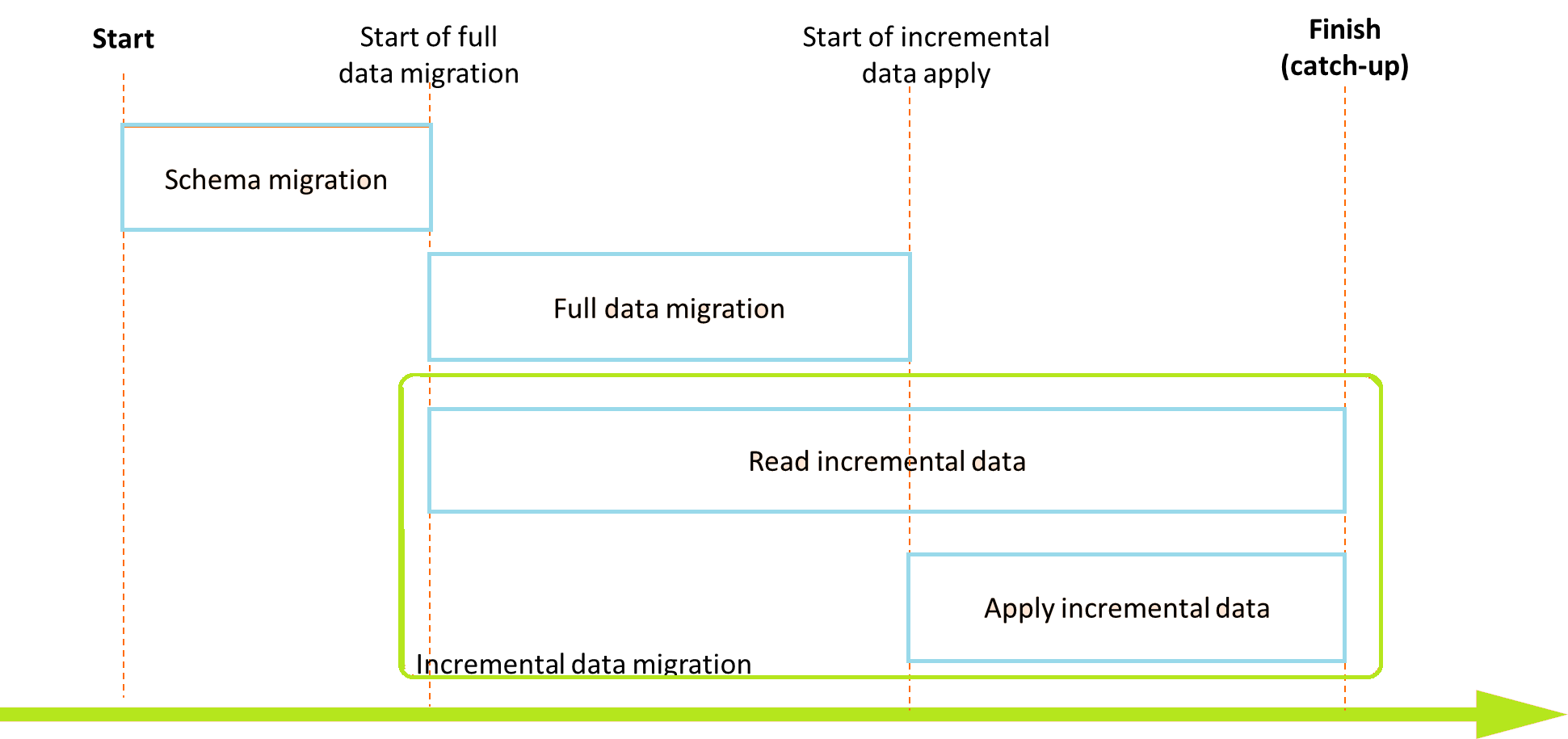
In this mode, the Data Transmission Service (DTS) synchronizes the changes made in data between two data sources. Usually, this is used with Online Transaction Processing to Online Analytical Processing (OLTP to OLAP.) This process is completed in two phases:
After loading the already present data from the source to the target data source, the Data Transmission Service starts to update and sync both data sources in real-time.
Let's take a look at the architectural flow of this scenario:
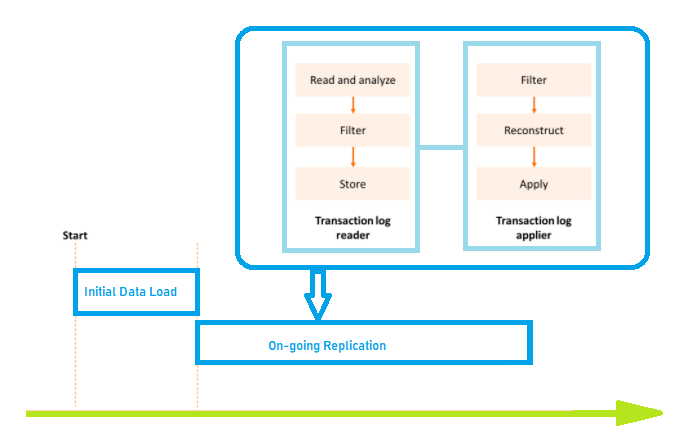
In this replication mode, DTS operates to capture data and highlight any changes as a publisher-subscriber stream. ApsaraDB for RDS and the log processor communicate to read the transaction log. After tracking the changes in data, they are processed, kept, and reported.
Let's take a look at the architectural flow of this mode:
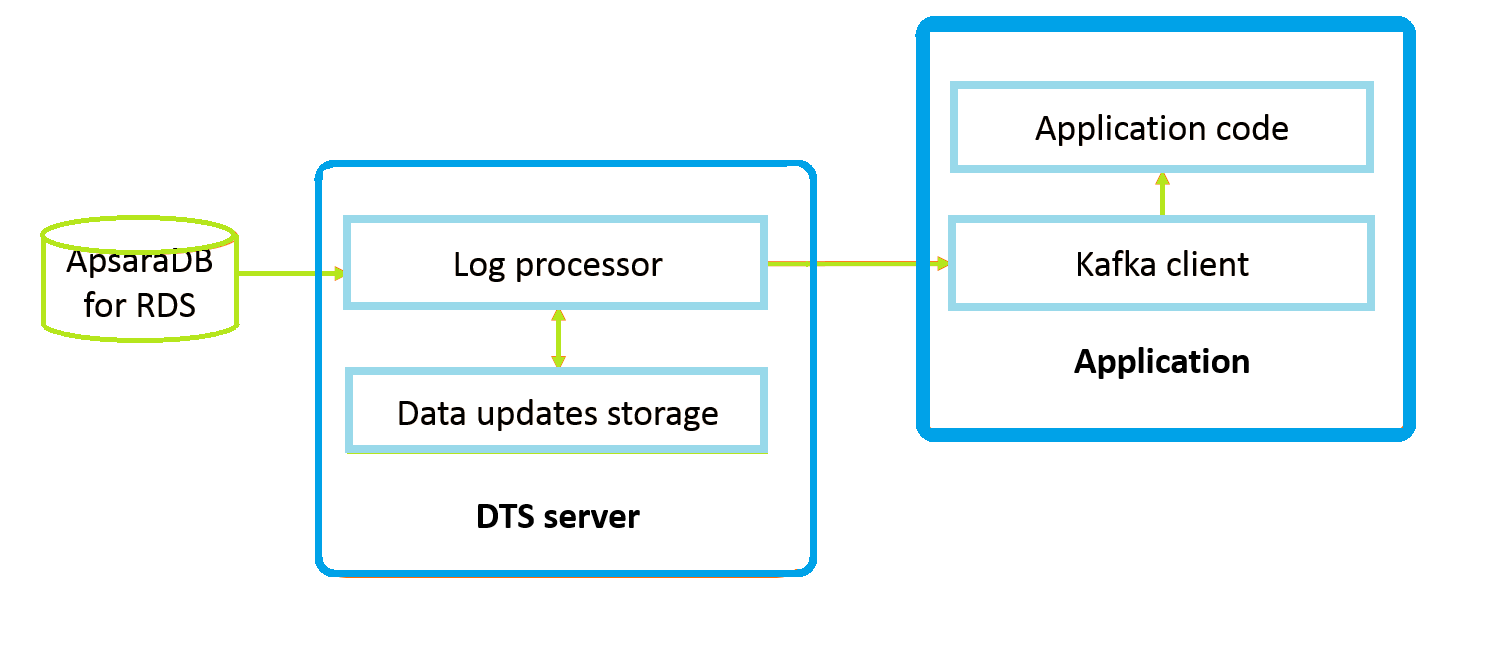
DTS allows incremental data transfers. This ensures virtually no downtime. During migration, any changes made to the source database are replicated in real-time to the target system.
As a user, after a successful migration, you can continue synchronizing both the source and target databases for as long as you like. This will enable you to switch over applications at your convenience.
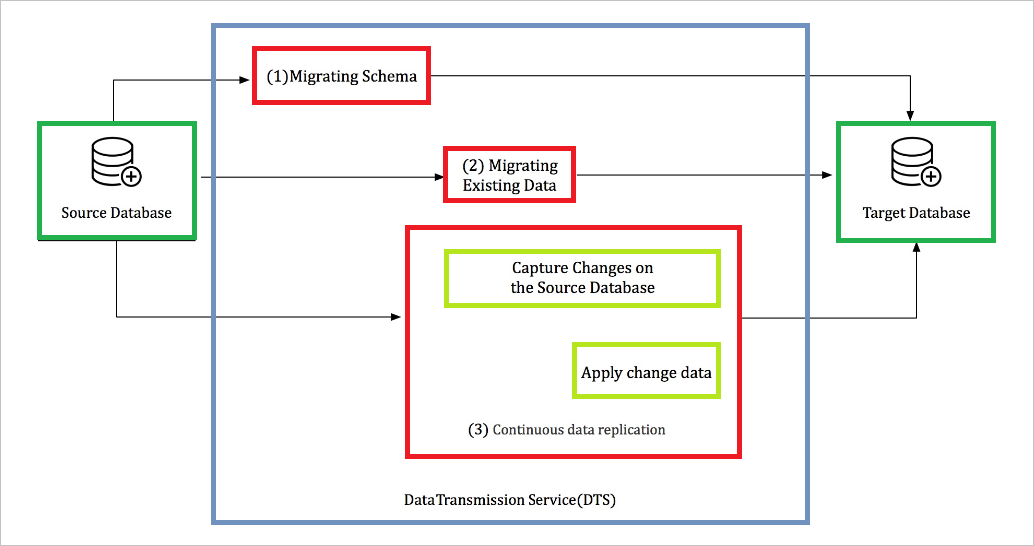
The Data Transmission Service (DTS) supports remote data disaster recovery by performing data replication between two instances in different regions. This service has a primary and slave (secondary) instance.
The secondary deployment sits in a different region to increase the availability of your application. DTS replicates data in real-time and keeps the two deployments synchronized to account for zero downtime in case the primary deployment suffers a catastrophe. In this case, the remote disaster recovery is the slave instance. As soon as some issue occurs, the applications can switch to the slave instance. This will enable high-availability and continuity.
Let's take a look at how this works through a visual representation:
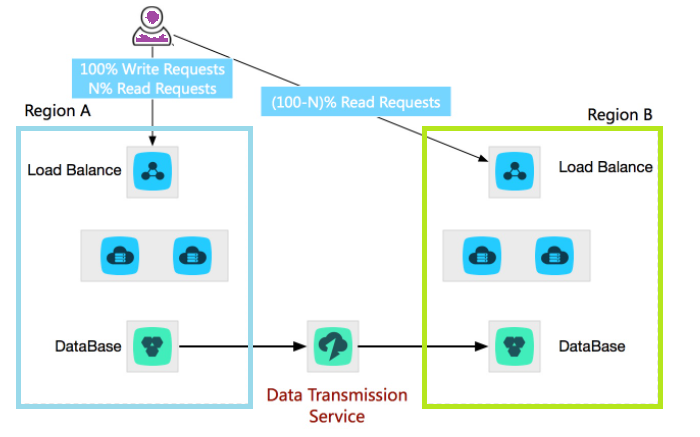
Alibaba Cloud has a complete solution for Business Intelligence (BI) requirements. QuickBI is a well-known product that comes from the Alibaba Cloud foundry.
Data Transmission Services (DTS) allows you to leverage the BI capabilities by replicating data in real-time from the user databases to Alibaba Cloud MaxCompute. All you need to do is integrate your applications and the Alibaba Cloud BI Storage.
Let's take a look at a diagram of how this works:
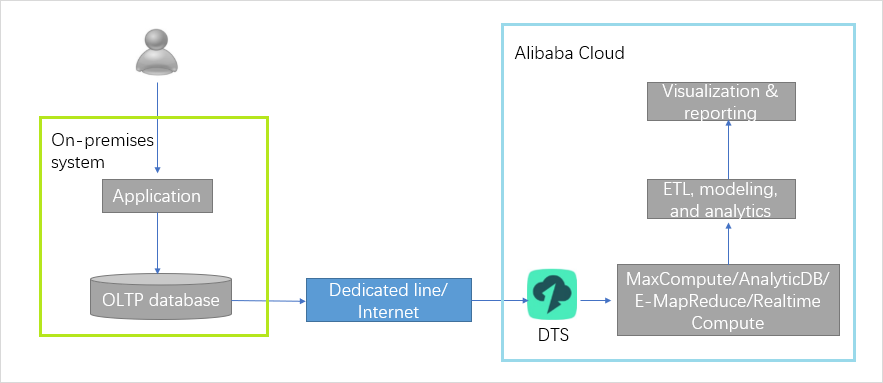
The Data Transmission Service (DTS) ensures an optimized and high-performance data delivery from the Relational Database System (RDS) to Analytics DB. The primary features for real-time big data analytics are:
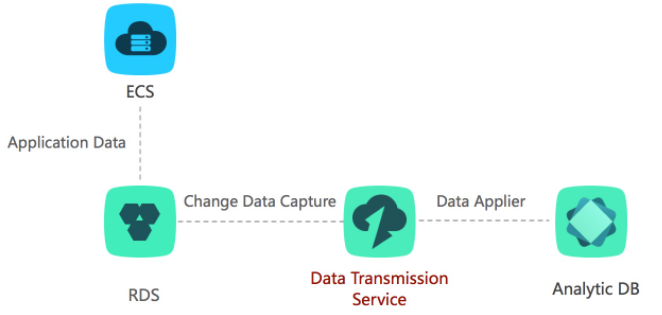
The Data Transmission Service (DTS) utilizes this architecture to increase user experience by allowing a centralized approach for processing requests. User requests from multiple regions are routed back to the center. Data in the center unit is synchronized with units in different regions to allow for a more synced and stable user experience. This allows for more enhanced performance.
Let's take a look at the architecture closely:
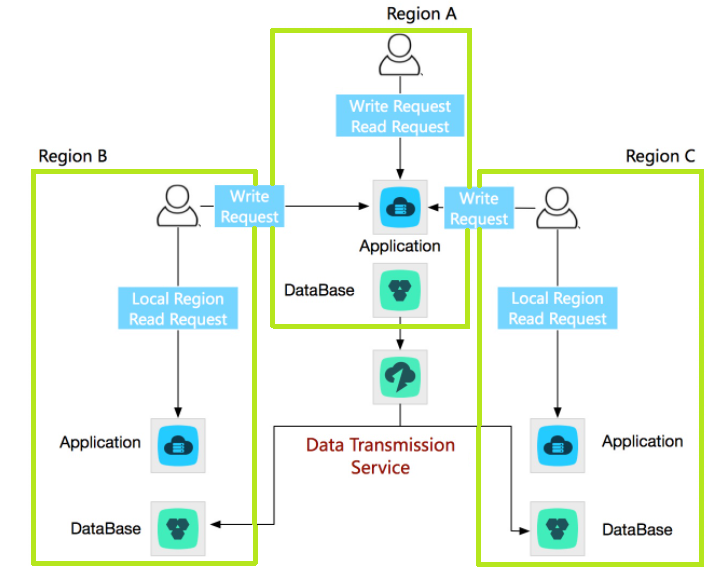
The Data Transmission Service is a fully managed service that enables the replication of data using different architectures to support different use-case scenarios. It does that by defining instances. These instances deliver a different capacity of replication needs to suit different industry requirements.
DTS provides a seamless data replication service and proves to be an industry-leading tool.

2,593 posts | 791 followers
FollowAlibaba Clouder - March 1, 2021
XG Lab - April 29, 2021
Alibaba Clouder - July 9, 2020
Alibaba Clouder - May 20, 2021
Alibaba Clouder - March 30, 2018
William Pan - August 19, 2019

2,593 posts | 791 followers
Follow ApsaraDB for HBase
ApsaraDB for HBase
ApsaraDB for HBase is a NoSQL database engine that is highly optimized and 100% compatible with the community edition of HBase.
Learn More Cloud Migration Solution
Cloud Migration Solution
Secure and easy solutions for moving you workloads to the cloud
Learn More Hologres
Hologres
A real-time data warehouse for serving and analytics which is compatible with PostgreSQL.
Learn More Oracle Database Migration Solution
Oracle Database Migration Solution
Migrate your legacy Oracle databases to Alibaba Cloud to save on long-term costs and take advantage of improved scalability, reliability, robust security, high performance, and cloud-native features.
Learn MoreMore Posts by Alibaba Clouder